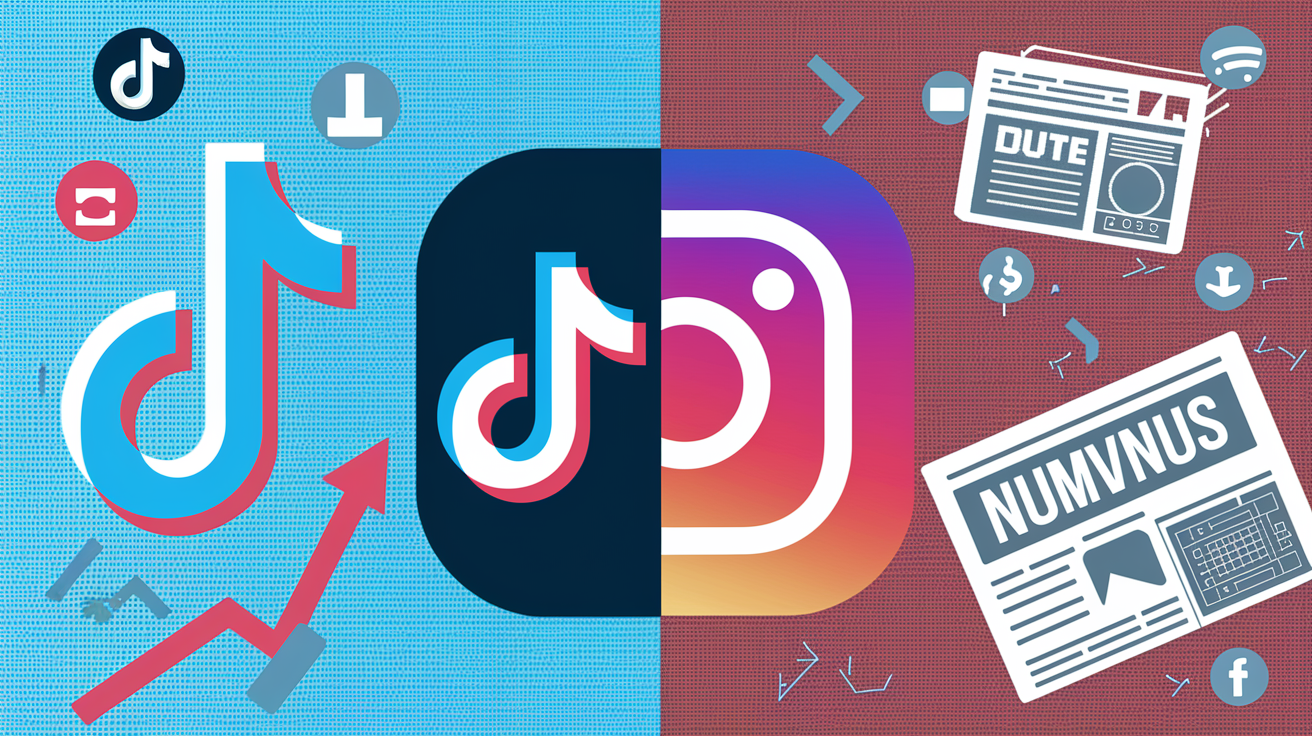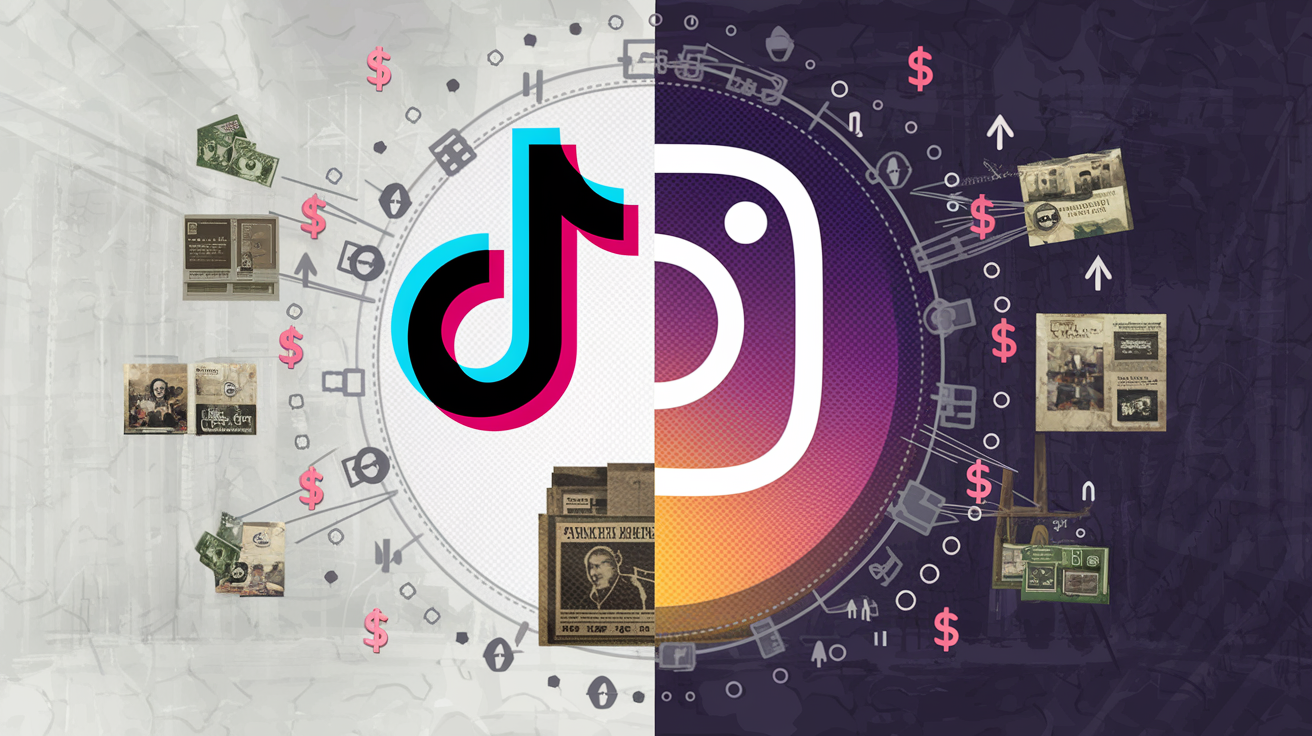The media landscape has dramatically changed in recent years. While social media platforms like TikTok and Instagram flourish and generate enormous advertising revenues, traditional media struggle to remain relevant. This article explores the differences in advertising revenues and user loyalty between these modern platforms and their classic counterparts. The two chapters provide insights into the financial potential and user interaction that may interest investors and private stakeholders.
Advertising Flows in Motion: The Rise of Social Media Platforms Compared to Traditional Media

The advertising landscape is undergoing a profound change. What was once the domain of traditional media like television, newspapers, and radio is now increasingly dominated by digital platforms like TikTok, Instagram, and YouTube. While these digital challengers record impressive growth in advertising revenues, traditional media struggle to maintain their relevance.
In recent years, the distribution of financial power has shifted in favor of social media. Meta platforms, including Facebook, Instagram, and WhatsApp, collectively generated $160.63 billion in advertising revenue in 2024, with forecasts indicating further increases. A significant part of this success is attributable to their ability to target users, thanks to the vast data collected by these platforms. TikTok is also at the forefront of this revolution, boasting 1.58 billion active users globally and distinguishing itself as a pioneer in social commerce. Although its revenues are lower than Meta’s, TikTok is growing rapidly and offers a high conversion rate due to its algorithms and creative format.
YouTube, the leading platform for video content, represents another gold standard for advertising revenues, with its 2.5 billion active users. Videos are often more effective than traditional television advertising, making the platform particularly attractive to advertisers. Additionally, the ability to precisely target specific demographic groups has shaken the foundations of traditional advertising strategies.
In contrast, traditional media face declining revenues. While television with a gross advertising revenue of €17.4 billion in 2024 remains a significant presence in Germany, the number of viewers is steadily decreasing, diminishing the impact of advertising campaigns. Newspapers also struggle to maintain their previous revenue sources as readers increasingly shift towards digital channels. Even cinema, once a glamorous venue for effective brand presentations, is suffering from a decreasing reach.
The clear trend indicates that social media platforms are not only growing but are redefining the advertising industry. Their ability to create targeted campaigns with high conversion power challenges the old models of mass communication. As these platforms continue to expand and innovate, traditional media will be forced to reevaluate their fundamental strategies to survive in an increasingly digital era.
User Loyalty in the World of Digital and Traditional Media: An Engaging Comparison

User loyalty is an essential aspect of the success of media platforms, both in the digital and traditional realms. While both types of media have different strengths and weaknesses, it emerges that social media offers a dynamic and personalized experience that traditional media simply cannot replicate.
Social media platforms offer a stimulating array of user loyalty opportunities driven by their interactivity and personalization. The ability of these platforms to create interactive experiences, where users can leave comments, share content, and quickly interact with others, is the greatest advantage of digital media. These platforms foster a sense of community within the digital space, strengthening the emotional bond.
Furthermore, multimedia elements such as images, videos, and live streams on social media have an amplifying effect. These dynamic and visual contents capture users’ attention and increase their active participation on platforms like Instagram and TikTok. Real-time feedback significantly contributes to ensuring that content resonates immediately and that adjustments can be made on-the-fly to meet users’ expectations.
In contrast, the landscape of traditional media struggles to make communication increasingly interactive and personalized. With a focus on linear and one-way communication, print, radio, and television face limitations in terms of personalization and flexibility. The lack of interactive elements and the limited ability to react directly to content often lead to a more passive consumer experience, making it challenging to create strong customer bonds.
However, despite these challenges, traditional media offer deeper and more contemplative content. Many viewers and readers appreciate the depth of coverage and analysis that is often lacking in social media. Additionally, print and television are still relevant in specific niches and for certain target groups.
Looking to the future, the continuation of this dynamic will be strongly influenced by technological innovation. The integration of artificial intelligence into social media platforms promises to further personalize content, thus intensifying user loyalty. However, data privacy is also becoming increasingly important on these platforms. The challenge will be to find a balance between privacy and ease of use to promote trust and long-term loyalty.
Ultimately, it must be said that neither social media nor traditional media monopolizes the creation of the best user loyalty. However, their differences allow users to individually decide which medium best meets their informational and entertainment needs.